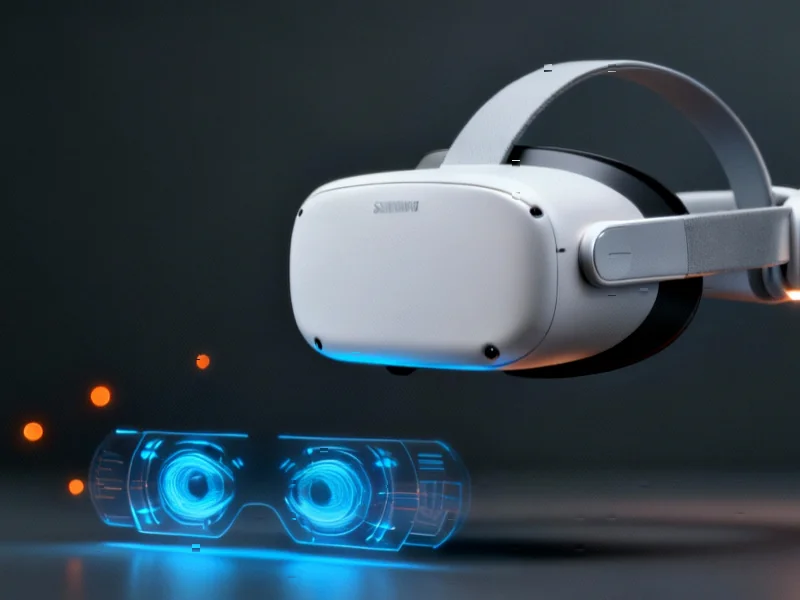According to Digital Trends, Google’s Ask Photos feature is expanding beyond its current dedicated tab with a new button appearing directly below image previews in version 7.52.0 of the Google Photos app. The feature, currently limited to users in the United States, allows natural language queries of photo libraries using AI. Additionally, code discovered in the latest APK references an upcoming “Outfits collection” feature that would enable users to organize photos by outfit, potentially integrating Google’s Doppl virtual try-on technology. These developments suggest Google Photos is evolving from a passive gallery into an interactive AI-enhanced personal archive, though the features haven’t been officially confirmed for stable release.
The AI Memory Revolution: From Storage to Interaction
What Google is quietly building represents a fundamental shift in how we conceptualize digital memories. For years, photo apps have been essentially sophisticated filing cabinets – organized storage with basic editing tools. The integration of natural language queries directly into the photo viewing experience transforms this dynamic. Instead of manually searching through albums or relying on automated “memories” features, users can have conversations with their photo libraries. This moves us toward what I call “contextual memory retrieval” – the ability to ask questions like “show me photos from that rainy day in Paris when we found the bookstore” and get meaningful results. The implications extend far beyond convenience; we’re looking at the beginning of AI-powered memory augmentation that could fundamentally change how we recall and interact with our personal histories.
The Fashion-Tech Convergence Accelerates
The potential integration of Google’s Doppl virtual try-on technology with the Outfits collection feature signals a major acceleration in fashion-tech convergence. While virtual try-on has existed in various forms, integrating it directly with a user’s personal photo archive creates an entirely new paradigm. Imagine being able to virtually “try on” outfits from your favorite stores while viewing photos of yourself in similar situations or settings. This creates a powerful contextual shopping experience that could dramatically reduce return rates and increase conversion for fashion retailers. More importantly, it represents Google’s continued push into visual commerce – using AI to bridge the gap between inspiration and purchase in ways that traditional e-commerce platforms can’t match.
The Privacy-Personalization Tension Intensifies
As these features evolve, they’ll inevitably intensify the ongoing tension between personalization and privacy. An AI that understands your fashion preferences, body type, and personal style based on your photo history represents an unprecedented level of personal data collection. While Google has generally maintained strong privacy controls around Photos data, the commercial potential of this information is enormous. Fashion brands would pay premium rates for access to anonymized insights about style preferences and body types across different demographics. The success of these features will depend heavily on Google’s ability to balance user trust with commercial opportunity – a challenge that has tripped up many tech companies in the past.
The Future Memory Ecosystem: Predictions for 2024-2025
Looking ahead, I expect these features to evolve into a comprehensive memory management ecosystem. Within 18 months, we’ll likely see integration with Google’s other AI services, potentially allowing users to generate new memories based on existing ones – imagine asking Google to “create a summer vacation album using photos from our past three beach trips” and having AI curate and even generate complementary content. The Outfits collection could expand into a full personal style assistant, recommending purchases based on gaps in your wardrobe or upcoming events in your calendar. The bigger picture here is Google’s positioning in the generative AI race – they’re betting that the most valuable applications won’t be creative tools for generating new content, but rather intelligence layers that make our existing digital lives more meaningful and productive.
The Competitive Landscape Shift
These developments put significant pressure on competitors like Apple Photos and Amazon Photos. Apple has focused primarily on privacy and seamless ecosystem integration, while Amazon has emphasized unlimited storage for Prime members. Neither has aggressively pursued AI-powered memory interaction at this scale. If Google successfully executes on this vision, they could create a defensible moat that goes beyond storage pricing or device integration. The ability to have meaningful conversations with your photo archive could become the killer feature that locks users into the Google ecosystem, much like iMessage has for Apple. This represents a strategic pivot from competing on storage costs to competing on intelligence value – a battle Google is uniquely positioned to win given their AI research leadership and massive data advantage.




